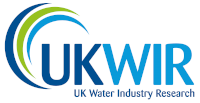Important scientific data goes public in water industry first
20/11/2020
The database contains final effluent data from 600 wastewater treatment works in England and Wales that have been investigated over the last five years, with corresponding river quality data from upstream and downstream of where these works are located.
The samples taken were analysed for 46 regulated trace substances, 26 substances of emerging concern and 12 supporting measures of wastewater quality, providing a rich source of scientific data.
Providing evidence
Although the sites chosen were targeted and not randomised, this phase provides some of the evidence needed to help inform future policy decisions about how to regulate these trace chemicals at their source (including metals, fire retardants and biocides, hydrocarbons, pharmaceuticals, hormones and personal care products) and what can be done to reduce concentrations, if needed, so that rivers and streams can be protected.
UKWIR, through Programme Lead, Thames Water's Howard Brett, has been managing the three phases of the £190m Chemical Investigations Programme (CIP), itemised in table 1.
Howard, said 'the decision to make the CIP2 data publicly available was an easy one to make as it allows informed debate regarding the condition of our nation’s rivers and the contributions from wastewater'. He added that 'CIP2 is probably the best dataset of its kind anywhere in the world. ‘
Having gone to the effort and expense of collecting this data for scientific and regulatory purposes, there is much to be gained from making the data publicly available while providing a valuable service to others’.
Greater transparency
The dataset provides greater transparency about the contribution of wastewater treatment works to the removal of these substances, the water quality of rivers, the part pollution from other sectors plays and what action they also need to take.
Anyone, from the public at large to academics, consultants, government departments and regulators, aquatic and environmental specialists, local community groups and river partnerships, can now access this important data.
The need for the Chemical Investigations Programme has been driven by EU legislation which has established Environmental Quality Standards for a wide range of chemicals in rivers.
Many of these chemicals have been shown to be ubiquitous in domestic wastewater and still present after treatment.
To help inform UK policy and to address the challenge of meeting the Environmental Quality Standards, the ten water and wastewater companies in England and Wales have cooperated on a twelve year programme of work, with UKWIR appointed to coordinate it.
The project, which is overseen by a steering group comprising water and wastewater companies and regulators, has recently started a third phase of investigations, the majority of which will complete in 2022.
This latest phase will improve understanding of how effective treatment processes are at removing trace chemicals at coastal and transitional water bodies, as well as recognising the additional complexity of emerging issues such as microplastics and antimicrobial resistance. The data can be accessed via the UKWIR website.
Table 1. The three phases of the CIP
|
Phase |
Funded cost |
Time frame |
Outcome |
|
CIP1 |
£25 million |
2010 – 2015 |
Determined the sources/pathways of chemicals getting into rivers via wastewater treatment works and characterised treated wastewater in terms of these chemicals |
|
CIP2 |
£140 million |
2015 – 2020 |
600 wastewater treatment works prioritised for further investigation to better understand the potential scale of the challenge. Carried out technology trials at wastewater treatment works to determine potential solutions to remove trace chemical substances before releasing treated wastewater into rivers |
|
CIP3 |
£25 million |
2020 – 2022 |
Filling remaining gaps in knowledge, particularly around microplastics and understanding anti-microbial resistance in current wastewater treatment processes |
